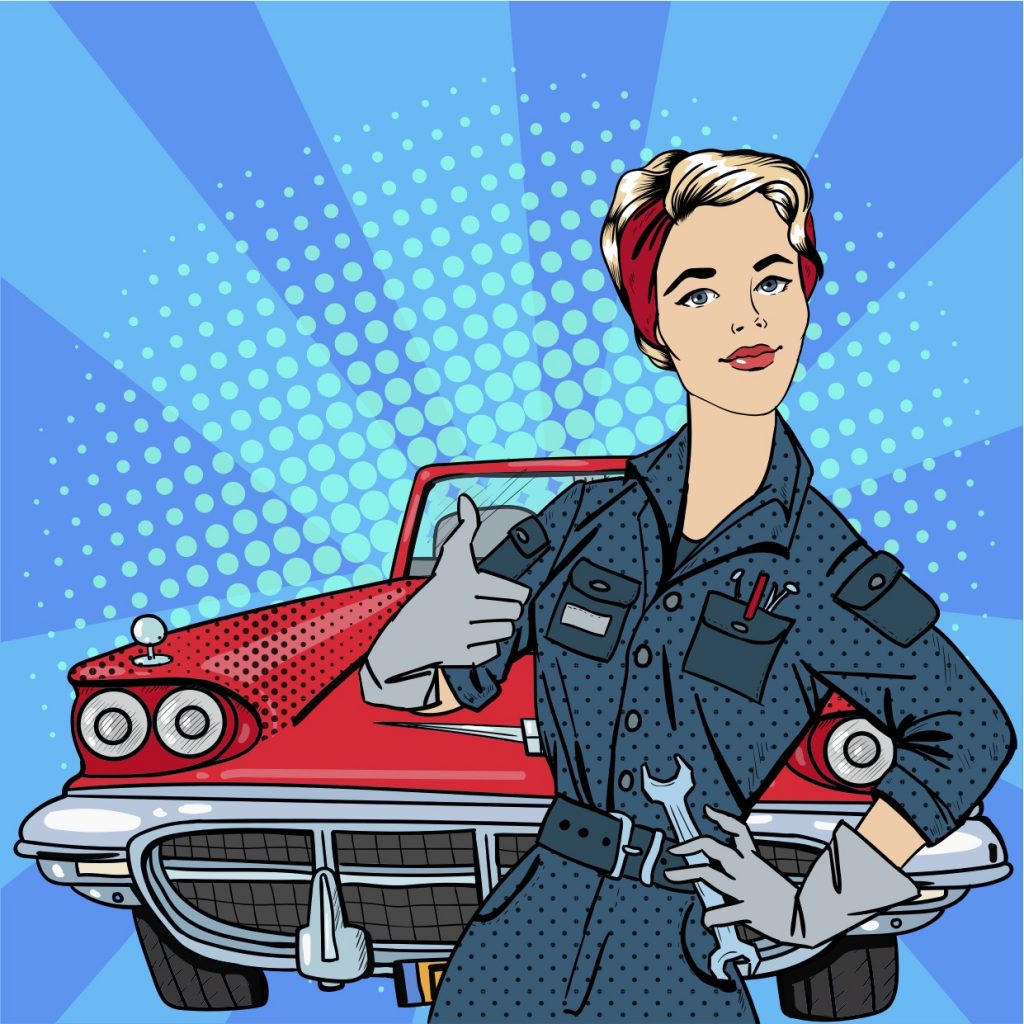
RECENT
Pink Power: The Barbie Car and Female Automobility
This project focuses on the role of the Barbie car in expanding the automotive world to those -in particular impressionable young girls – who might otherwise feel excluded from it. While acknowledging the ways in which the Barbie phenomenon reinforces stereotypical displays of femininity, it also argues that the vehicles in which Barbie – not Ken – is the driver have the opportunity to promote independence, agency, identity, and empowerment in the future woman driver.
in Journal of American culture – 46 (2023): 197-208. https://doi.org/10.1111/jacc.13462
Women & Automobiles Across Two Continents: An [Unfortunately] Brief Historiography of Women’s Automotive Scholarship in Australia and America
This historiography examines the trajectory of women’s automotive history scholarship in both Australia and the US to consider how women’s automotive participation has been addressed in each location – the overlaps and dissimilarities; the importance of a gendered perspective to traditional automotive histories; as well as to reflect upon future opportunities for the study of women and cars.
This paper was presented at the joint SAH/AHA Wheels Across the Pacific: Transnational Histories of the Automotive Industry Virtual Symposium in September 2022.
In Automotive History Review 64 (SPRING 2023): 30-43.
From Powder Puff to W Series: The Evolution of Women-Only Racing
This chapter in a scholarly book of essays on motorsports explores the chronology and controversy of all-female racing events, and considers how women-only racing complicates, facilitates, and liberates women’s entry, participation, and recognition in the masculine world of motorsports.
in Lives in the fast lane: essays on the history and Politics of Motor racing. D. Andrews, D. Strum, & S. Wagg (eds). London: Palgrave Macmillan, 2023: 247-270.
What Would Miss Daisy Drive? The Road Trip Film, the Automobile, and the Woman Behind the Wheel
This paper examines the relationship between a woman and her automobile in a variety of road trip films. Focusing on the car rather than the journey, the project encourages us to reassess the roll of the automobile in film, to expand our understanding of the road trip genre to include the female driver, as well as to broaden our notion of women’s car choice to include considerations of identity, agency, friendship, family, and empowerment.
THE JOURNAL OF POPULAR CULTURE 54.5 (October 2021): 987-1011.
McCann & Me: One Woman’s Experience in Detroit Automotive Advertising
This paper is a personal account of the three years I spent working in the creative department of McCann-Erickson during the early 1980s. It describes the automotive advertising process from concept to production, discusses the campaigns I worked on for Buick and other clients, and reflects upon some of the challenges I faced as a female in the very male dominated automotive culture.
AUTOMOTIVE HISTORY REVIEW 62 (Spring 2021): 4-16.
FUTURE
Introduction to Limousine by Kathy Shorr
In the late 1980s, Shorr spent nine months as a limousine driver in Brooklyn shortly after graduating from New York’s School of Visual Arts. This series of photographs – taken inside and outside the limousine – has won numerous awards and was featured at the celebrated Visa Pour L’Image in Perpignan, France. The collection will be published in book form in late 2024.
“Without the Community, It’s Just Driving Fast Around Cones”: Autocross, Women’s Worlds, and the Reimagining of Motorsport Culture
This project examines women’s growing involvement in the motorsport of autocross, an accessible and challenging timed competition in which drivers navigate a unique course defined by cones or pylons. Relying on interviews with female participants, as well as in-person observation at autocross events, this research investigates how and why women become involved in autocross, the ways in which women have negotiated entry into a historically masculine environment, and how the autocross experience can contribute to women’s identity, confidence, self-knowledge, and empowerment.
This paper was presented at the Argetsinger Symposium on Auto Racing History in Watkins Glen NY in November 2022, and is currently under consideration for publication in an academic journal.
Who Drives Automotive History? The Representation of Women in America’s Automotive Museums
While there have been many histories devoted to the automobile since it first appeared on the American scene in the early twentieth century, very few pay particular attention to women’s automotive involvement or interest. This absence is not only evident in the thousands of publications devoted to automotive history, but in locations such as the automotive museum as well. This project will examine the representation of the women driver in a dozen automotive museums in auto-centric Michigan and the surrounding areas. It will consider how each museum positions the role of women in automotive history, the methods by which women’s automotive involvement and impact is displayed, how women’s presence in automotive history is regarded in comparison to that of men, and perhaps offer suggestions as to how museums might better address the role and influence of women in automotive history and American culture.
This paper was presented in March 2024 at the Popular Culture Association Conference in Chicago, Illinois.
This is Not My Husband’s Jeep: Women On and Off the Road
This is a qualitative research project that will focus on female owners of Jeeps and other off-road vehicles.
Women Writing Cars: The Experiences of Female Auto Journalists
This project will focus on three accomplished female auto journalists who work in a variety of media. Through interviews, as well as an examination of their collected body of work, I hope to uncover not only the strategies women employ to overcome obstacles in a male dominated field, but also how the writers call upon their own automotive experiences as women to add an important and often missing point of view to auto journalism.